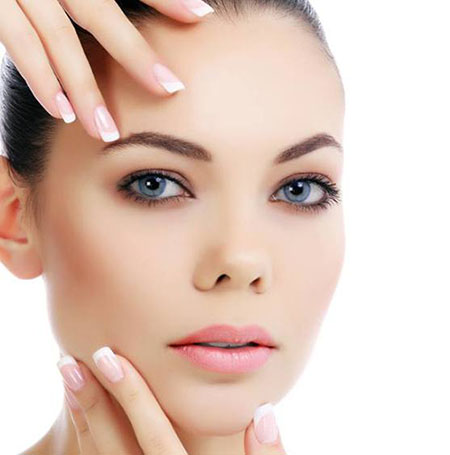Filling
Filling
What is filling?Fillings being used extremely in recent years in the field of esthetics are the materials used to eliminate the wrinkles formed on the skin, to fill the volume loss and to eliminate the collapses. Aging signs may be eliminated by virtue of filling applications and hence, a fresh younger skin without winkles can be obtained.
 What is the most commonly used filling material?
What is the most commonly used filling material?
Nowadays, most commonly used fillings are those containing hyaluronic acid. Hyaluronic acid is a glycosaminoglycan which is consisted in natural structure of our skin and it increases collagen release from the skin while providing fullness and volume to the skin. Hyaluronic acids found in the filling materials are obtained in the laboratory conditions by producing by Staphylococcus equine bacteria.
In which regions filling is used for facial rejuvenation purpose?Fillings are used to eliminate collapses in frowning regions, nasolabial folds descending from the nose edge toward the lip edge, the volume losses in the cheeks and to open located around the forehead and eyes. Apart from eliminating the wrinkles, filling applications are done also to shape the nose, to give volume cheeks, cheekbones.
What are the issues to be cared before the filling application?Hyaluronic acid is a substance which does not lead allergic reaction and which biocompatibility. Filling application are done via injector or cannulas. Small bleedings may occur during injection. If you are receiving anticoagulant medication, you may have more swelling and bruises than estimated following the filling application. Please inform definitely your physician about the drug that you are using.
If you have any allergy toward any substance or medications, please definitely inform your physician.
How long does the filling application last?Fillings are materials which can be applied in shorter duration. The procedure may be completed in five to twenty minutes depending on the area to be applied.
Filling thickness varies depending on the applied area. Thin fillings are performed in eye contours, in lip and in the thin wrinkles in the face and their persistency is for nine to twelve months. Thicker fillings are used for the purpose of eliminating deep wrinkles and collapses and their persistency is approximately twelve to twenty four months.
The occurrence of some swelling and maybe bruises are expected signs. The proportion of these swellings and bruises may vary depending on the people and on the performed area. Suborbital areas and lips are more prone to swelling and bruises compared to other facial regions.
In filling applications, the pain sensation is minimized during the procedure by using anesthetic creams and local anesthetic medication during the procedures.
 Turkish
Turkish